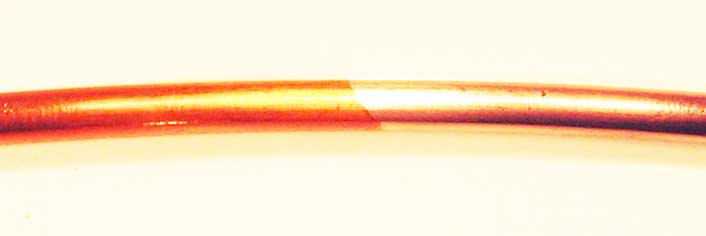

The appearance of the rod might not be a reliable clue for concluding whether or not SSOs are present nor even whether USOs are high. This is because there also needs to be an understanding of the presence or absence of interference colors. For example, imagine taking a length of rod with very low oxides and with a reasonably smooth surface. Imagine that rod is heated in an oven in air. Perhaps that rod comes out of the oven with a distinct purple-gold tint on its surface, like that shown on the left side of Figure 19. The resulting value from surface oxide testing may be 500 Ǻ. Does that mean that if a rod directly from hot rolling tests at a value of 500 Ǻ, it must have the same dark appearance and if not there are subsurface oxides present? The answer is mostly going to be, �No�. In short, the reason for this is growing oxides in an oven typically produces well-defined layers of oxides, which create the affect of visible interference colors. On the other hand, the hot rolling process in the presence of mill emulsion creates a much more complex oxide layer, which often will not cause optical interference. For example, the cuprous and cupric oxides tend to be mixed instead of separated into layers as when grown in an oven. Similarly, it is often impossible to infer the presence or absence of SSOs by sight alone.

Rod heated in an oven forms an oxide that appears dark golden in color and results in a surface oxide measurement of 527 Ǻ. This rod appears darker than as received hot rolled with the same surface oxide measurement due to the more orderly oxide layers grown in the oven, which induce the optical phenomenon of interference. The right side of the rod has had the oxide removed in the surface oxide test. Furthermore, sometimes there are other non-reducible substances on the surface that cause dark stain. Such stains are far more common on wires than on rod.
![]()